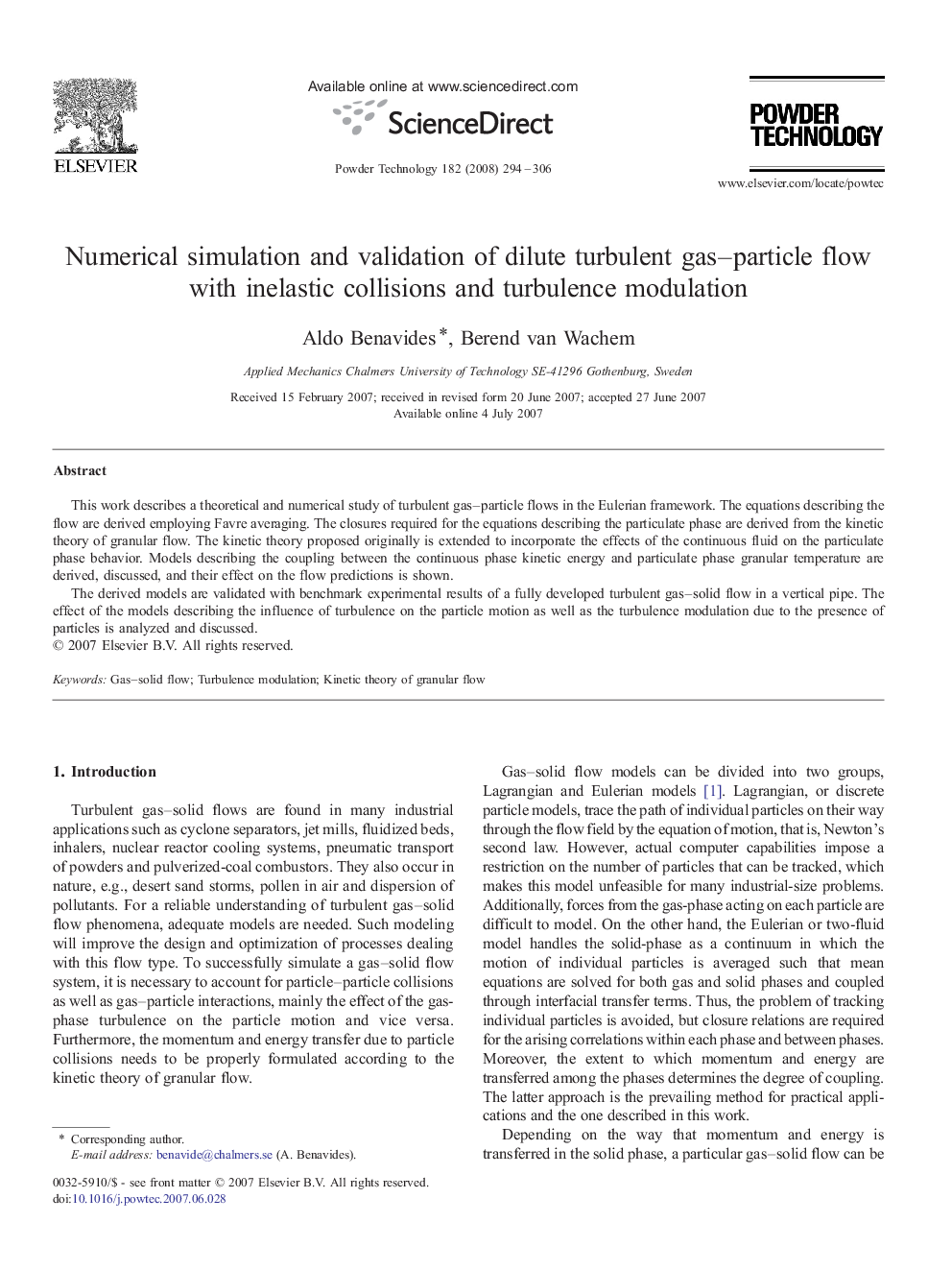| کد مقاله | کد نشریه | سال انتشار | مقاله انگلیسی | نسخه تمام متن |
|---|---|---|---|---|
| 239181 | 465802 | 2008 | 13 صفحه PDF | دانلود رایگان |

This work describes a theoretical and numerical study of turbulent gas–particle flows in the Eulerian framework. The equations describing the flow are derived employing Favre averaging. The closures required for the equations describing the particulate phase are derived from the kinetic theory of granular flow. The kinetic theory proposed originally is extended to incorporate the effects of the continuous fluid on the particulate phase behavior. Models describing the coupling between the continuous phase kinetic energy and particulate phase granular temperature are derived, discussed, and their effect on the flow predictions is shown.The derived models are validated with benchmark experimental results of a fully developed turbulent gas–solid flow in a vertical pipe. The effect of the models describing the influence of turbulence on the particle motion as well as the turbulence modulation due to the presence of particles is analyzed and discussed.
This work describes a theoretical and numerical study of turbulent gas–particle flows in the Eulerian framework. The equations describing the flow are derived employing Favre averaging. The closures required for the equations describing the particulate phase are derived from the kinetic theory of granular flow. The kinetic theory proposed is extended from its original form to incorporate the effects of the continuous fluid on the particulate phase behavior. Models describing the coupling between the continuous phase kinetic energy and particulate phase granular temperature are derived, discussed, and their effect on the flow predictions is shown.The model is validated by comparing its predictions to experiments of fully developed turbulent gas–solid pipe flow. As shown in Fig. 1, there is very good qualitative and quantitative agreement between the simulation results and the experimental data. The presence of a dispersed phase clearly modifies the gas-phase behavior, as illustrated in Fig. 1, when comparing the profiles for a single-phase flow (clear gas) to the particle-laden flow cases. It has also been shown that an increase in the solid-phase concentration significantly dampens the gas-phase velocity fluctuations far from the pipe wall; this is in accordance with experimental observations.Figure optionsDownload as PowerPoint slide
Journal: Powder Technology - Volume 182, Issue 2, 22 February 2008, Pages 294–306